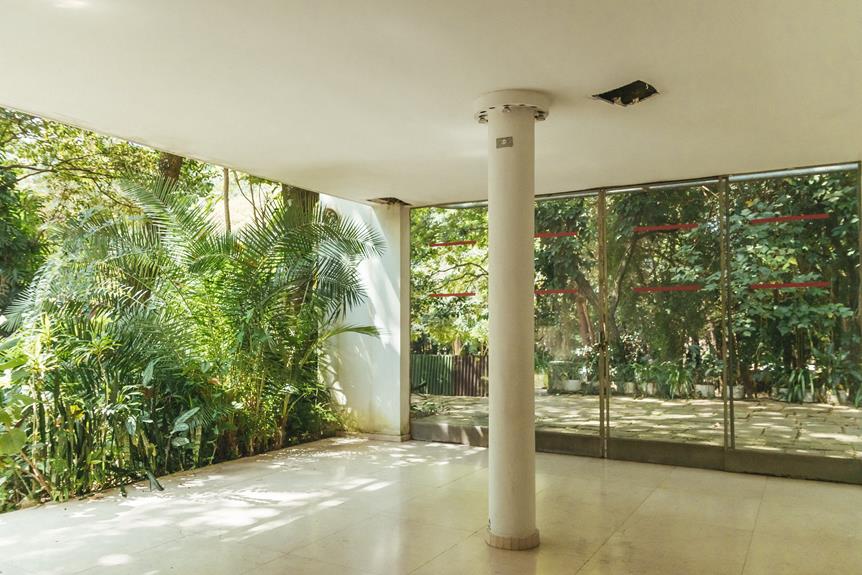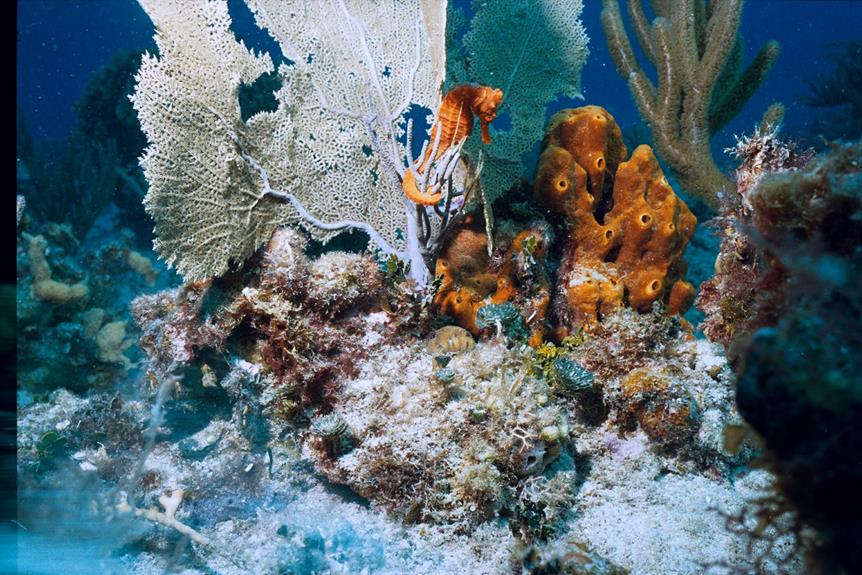In the realm of aquatic horticulture, the strategic selection of column feeding plants serves as a cornerstone in sculpting a harmonious and visually captivating underwater environment. These botanical wonders possess a fascinating ability to draw nutrients from the water column, creating a dynamic ecosystem within the confines of your home tank.
As we navigate through the curated list of seven exceptional column feeding aquarium plants, each offering a unique blend of elegance and functionality, a deeper exploration into their individual characteristics and benefits awaits. Stay tuned to unveil the secrets behind these green marvels and discover how they can transform your aquatic sanctuary into a thriving oasis of life and beauty.
Key Takeaways
- Column feeding plants have rhizomes for nutrient absorption, not roots.
- Rotala Indica and Rotala Rotundifolia require specific care for vibrant colors.
- Java Fern and Java Moss are low-maintenance and adaptable to various conditions.
- Bacopa and Pelia add diversity and movement to your tank with minimal care.
Rotala Indica
Rotala Indica, known for its vibrant hues and intricate growth patterns, is a species of aquarium plant that demands meticulous care and specific aquatic conditions to flourish successfully. This plant exhibits color variations ranging from green to red and yellow, enhancing the tank's visual appeal.
To ensure optimal growth, place Rotala Indica in a well-lit tank with a nutrient-rich substrate. Regular pruning techniques, such as trimming the stems to encourage bushier growth, are essential for maintaining its bush-like appearance. Additionally, providing adequate iron supplementation and CO2 injection can aid in promoting robust growth.
Aquarists should be cautious when handling Rotala Indica due to its delicate nature, requiring careful attention to prevent damage while cultivating this striking aquatic plant.
Rotala Rotundifolia
Having discussed the care requirements and characteristics of Rotala Indica, the focus now shifts to exploring the distinct features and maintenance considerations associated with Rotala Rotundifolia, a vibrant aquatic plant species known for its unique pink coloration and elongated leaves.
Rotala Rotundifolia exhibits a continuous growth pattern under suitable conditions, requiring regular pruning to maintain its aesthetic appeal. Adequate lighting, preferably moderate to high, is essential for its growth, and it thrives in water parameters with a pH range of 6.0-7.5 and temperatures between 72-82°F. Monitoring nitrate levels is crucial to prevent stunted growth.
Java Fern
The Java Fern, scientifically known as Microsorum pteropus, is a popular aquatic plant species sought after by aquarium enthusiasts for its distinctive long green leaves that enhance the aesthetic appeal of freshwater tanks. Java Fern is known for its ease of care and adaptability to various tank conditions.
Propagation methods for Java Fern include dividing the rhizome and planting new sections. Care tips involve avoiding burying the rhizome in substrate to prevent rotting. Lighting requirements for Java Fern are low to moderate, making it suitable for tanks with minimal light.
Water parameters should be stable, with temperatures ranging from 68-82°F (20-28°C) and a pH level of 6.0-7.5 for optimal growth.
Java Moss
Java Moss, scientifically referred to as Taxiphyllum barbieri, is a versatile and popular aquatic plant commonly utilized in aquariums for its ability to create a lush green background with minimal maintenance requirements. This moss can be placed on driftwood, substrate, or rocks, making it a flexible choice for aquascaping.
Java Moss growth accelerates with additional light, requiring moderate to high lighting conditions for optimal development. Regular trimming may be necessary to prevent overgrowth and maintain a neat appearance. When considering Java Moss for your aquarium, ensuring adequate lighting levels is crucial to support its growth and overall health.
Bacopa
Bacopa, characterized by its rounded leaves in green and brown hues, is a slow-growing aquatic plant that thrives with minimal maintenance in aquarium settings. This versatile plant offers various benefits for your tank:
- Growth Trimming: Regular trimming encourages bushier growth and prevents the plant from becoming leggy.
- Nutrient Absorption: Bacopa efficiently absorbs nutrients through its roots and leaves, contributing to a healthy aquatic environment.
- Tank Adaptation: Bacopa adapts well to different tank sizes and appearances, making it a flexible choice for aquarists.
With its low light maintenance requirements and adaptability, Bacopa is an excellent addition to any aquarium seeking a vibrant and easy-to-care-for plant species.
Pelia
Pelia, known for its flowy leaves that add dynamic movement to aquariums, is a hardy aquatic plant requiring minimal maintenance once established. This plant exhibits rapid growth patterns under suitable conditions. To ensure its thriving, place Pelia in the middle or background of the tank, providing ample space for its spread. Lighting requirements for Pelia are moderate, making it adaptable to various setups. When it comes to maintenance, occasional trimming is recommended to prevent overgrowth and maintain its aesthetic appeal. Pelia's resilience makes it an excellent choice for both beginner and experienced aquarists looking to enhance their tank's visual appeal with minimal effort.
| Growth Patterns | Maintenance Tips |
|---|---|
| Rapid | Occasional trimming to control growth |
| Spread throughout tank | Ensure sufficient space for expansion |
| Monitor for any signs of decay or algae | |
| Propagate by division for optimal health |
American Waterweed
American Waterweed, also known as Elodea canadensis, is an aquatic plant renowned for providing ample shelter for shy fish due to its large leaves while simultaneously enhancing oxygen levels in the aquarium. This plant offers various benefits, including:
- Oxygen production: American Waterweed produces significant amounts of oxygen, reducing the need for additional oxygen supply in the tank.
- Fish hiding spots: The large leaves of American Waterweed create ideal hiding spots for shy fish, promoting their well-being and reducing stress.
- Natural oxygenation: By releasing oxygen through photosynthesis, this plant contributes to the natural oxygenation of the aquarium, creating a healthier environment for aquatic life.
Frequently Asked Questions
Can Rotala Indica Survive in Low Light Conditions?
Rotala Indica care is crucial for its survival in low light conditions. Regular trimming of Java Fern enhances its beauty. Shrimp are safe with Bacopa within its temperature range. Pelia covers tanks well, providing an accentuated appearance.
How Often Should Java Fern Be Trimmed for Optimal Growth?
To ensure optimal growth of Java Fern, regular trimming is essential. Aim to trim every 4-6 weeks to maintain its beauty and health. Pruning dead or yellowing leaves promotes new growth, helping the plant flourish in your aquarium.
Is Java Moss Safe to Use With Shrimp and Small Fish?
When considering shrimp behavior and tankmates, it's crucial to assess if Java Moss is safe. Ensure plant maintenance aligns with water quality needs. Java Moss generally provides a favorable habitat for shrimp and small fish.
What Is the Ideal Temperature Range for Bacopa to Thrive?
The ideal temperature range for Bacopa to thrive is between 72-82°F. Consistent water parameters, moderate lighting, and regular fertilization support its growth. Propagation through stem cuttings aids in its spread within the aquarium.
How Quickly Does Pelia Spread and Cover the Tank Once Introduced?
Pelia, known for its rapid propagation, spreads efficiently in tanks once introduced. Its growth rate can vary based on light, nutrients, and maintenance. Regular trimming and strategic placement help control coverage, ensuring an accentuated tank appearance.
Conclusion
In conclusion, the selection of column feeding aquarium plants is crucial for enhancing the aesthetic appeal and ecological balance of home tanks. By incorporating species such as Rotala Indica, Java Moss, and Bacopa, aquarists can create flourishing underwater ecosystems.
These plants offer unique feeding mechanisms and diverse care requirements, catering to a range of expertise levels. With proper maintenance and attention to compatibility with tank conditions, aquarists can cultivate sustainable aquatic habitats filled with vibrant greenery.





